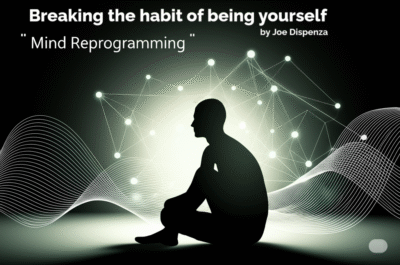Summary of Key Findings:
Mental exercises—purposeful activities designed to challenge cognitive functions—offer a wide array of benefits, from sharpening memory and boosting focus to enhancing creativity and problem-solving skills. Research shows that integrating these exercises into daily routines can improve academic achievement by strengthening planning and self-discipline. while also reducing mental fatigue and stress during work tasks.Historically, great minds such as Leonardo da Vinci, Marie Curie, and Albert Einstein used structured brainstorming and visualization techniques to spark breakthroughs, illustrating how mental workouts can catalyze both literary and scientific innovation. To maximize benefits, exercises should be varied—ranging from crossword puzzles and jigsaw challenges to mindfulness and strategic game play—and woven into study or work sessions at optimal times, such as right after breaks or before tackling complex projects.
Table of contents
- 1. What Are Mental Exercises and How Do They Work?
- 2. How Do Mental Exercises Support Study and Work Performance?
- 3. When and How Should You Integrate Mental Exercises into Your Routine?
- 4. Who Were the Luminaries That Exemplified Mental Exercises?
- 5 . What Are the Main Types of Mental Exercises and How Do You Practice Them?
- 6. A Practical Summary Table Show?
1. What Are Mental Exercises and How Do They Work?
Mental exercises refer to activities deliberately designed to engage and strengthen specific cognitive functions—memory, attention, planning, and creativity—through repeated, targeted practice. Unlike passive reading or routine tasks, these exercises create novel challenges that force your brain to form new neural connections, a phenomenon known as neuroplasticity.
- Neuroplasticity Activation: When you tackle a new puzzle or learn a strategy game, you stimulate synaptic growth in regions like the prefrontal cortex and hippocampus, improving your ability to encode and retrieve information.
- Transfer Effects: While some debate exists around far-transfer (applying skills to vastly different tasks), meta-analyses indicate moderate near-transfer benefits—enhancing performance in related areas such as vocabulary recall after word-based exercises.
2. How Do Mental Exercises Support Study and Work Performance?
2.1 In What Ways Do They Enhance Memory and Recall?
- Spaced Retrieval Practice: Activities like flashcards or timed quizzes leverage the spacing effect, reinforcing long-term memory consolidation and reducing forgetting curves.
- Pattern Recognition Drills: Games that require remembering sequences (e.g., Simon Says or memory card matches) strengthen working memory, improving your capacity to hold and manipulate multiple pieces of information simultaneously.
2.2 How Do They Boost Focus and Attention?
- Mindfulness and Meditation: Brief daily meditation sessions—such as breath awareness or body scans—train the brain to resist distractions, leading to measurable increases in sustained attention and reduced mind-wandering.
- Task-Switching Exercises: Rapidly alternating between simple tasks (e.g., switching between math problems and word puzzles) enhances cognitive flexibility, enabling smoother transitions between different study or work duties.
2.3 Can They Improve Creativity and Problem-Solving?
- Divergent Thinking Prompts: Brainstorming “10 uses for a paperclip” or visual “what if” scenarios forces lateral thinking, expanding your repertoire of mental associations and fostering innovative ideas.
- Analytical Puzzles: Logic problems, such as Sudoku or chess tactics drills, refine analytical reasoning and pattern detection—skills directly transferable to scientific research and technical writing.
3. When and How Should You Integrate Mental Exercises into Your Routine?
3.1 What Are the Optimal Times to Practice?
- After Physical Breaks: Following a short walk or light exercise, mental exercises capitalize on increased blood flow and alertness, yielding better performance on subsequent tasks.
- Before Deep Work Sessions: Starting your study or work block with a five-minute brain teaser primes executive functions, smoothing the path into focused, uninterrupted work.
- During Downtime: Incorporate micro-sessions (2–3 minutes) of puzzles between meetings or study topics to reset attention and reduce mental fatigue.
3.2 How Long Should Each Session Be?
- Micro-Workouts (2–5 minutes): Ideal for quick mental resets between tasks.
- Standard Sessions (10–20 minutes): Balanced duration for deeper engagement without cognitive overload.
- Extended Practice (30–60 minutes): Reserved for advanced skill-building days, alternating exercise types to avoid plateau.
4. Who Were the Luminaries That Exemplified Mental Exercises?
4.1 How Did Leonardo da Vinci Use Mental Mapping and Brainstorming, Moment by Moment?
Leonardo’s journals reveal a practice of creative brainstorming where he sketched mind‐maps interlinking anatomy, hydraulics, and fables to spark analogical insights.
He began each session by posing open‐ended “What if?” questions, then rapidly drew connections between disparate domains—science, art, engineering—to fuel lateral thinking.
4.2 How Did Albert Einstein Employ Thought Experiments to Pioneer Relativity?
From age sixteen, Einstein ran iterative thought experiments—imagining himself on a beam of light—to viscerally probe contradictions in Maxwell’s equations over a decade.
He scheduled daily “quiet hours,” during which he would isolate himself to mentally manipulate theoretical scenarios until he observed novel patterns, a method later called attentional space.
4.3 How Did Marie Curie Cultivate Mental Resilience Through Disciplined Study Under Hardship?
Denied formal university access in Warsaw, Curie spent five years tutoring by day and studying clandestinely at a “floating university” by night, training her self‐directed learning skills under pressure.
Her rigorous schedule—balancing laboratory research with handwritten note‐taking and nightly problem drills—built exceptional focus and persistence, key facets of modern mental toughness models.
5. What Are the Main Types of Mental Exercises and How Do You Practice Them?
5.1 What Are Memory Exercises and How Do You Do Them Step by Step?
- Choose a Target: Select 10–15 key facts or terms.
- Spaced Retrieval: Create digital or physical flashcards; test yourself at increasing intervals (1 hour, 1 day, 3 days).
- Elaborative Encoding: For each item, form a vivid mental image linking it to a familiar concept.
- Self‐Explanation: After initial recall, explain the concept in your own words.
- Review & Reflect: At the end of the session, summarize mistakes and focus next practice on weak items.
5.2 What Are Attention Exercises and How Do You Do Them Step by Step?
- Select a Focus Object: Breath count or a candle flame.
- Set a Timer (5 min): Sit upright, eyes gently closed or softly gazing.
- Sustain Attention: Each time mind wanders, note the distraction and gently return to breath.
- Increment Duration: Gradually increase by 1 minute per session, up to 20 minutes.
- Task‐Switching Drill: Alternate between two simple tasks (math flashcards vs. word puzzles) every 2 minutes to build cognitive flexibility.
5.3 What Are Problem‐Solving Exercises and How Do You Do Them Step by Step?
- Pick a Puzzle: Logic grid, Sudoku, or chess tactic.
- Define Rules & Constraints: Read instructions thoroughly.
- Work Systematically: Break problem into sub‐steps; note partial solutions.
- Iterate Solutions: If stuck, sketch alternative approaches rather than restarting.
- Reflect: After completion, write a brief debrief on strategies that succeeded or failed.
5.4 What Are Creativity Exercises and How Do You Do Them Step by Step?
- Divergent Prompt: “List 10 uses for a paperclip.”
- Time‐Bound Generation (5 min): Write without self‐editing to maximize output.
- Mind Mapping: Place the core topic in center; branch out with sub‐ideas, images, and analogies.
- Combine & Refine: Pair unrelated branches to spark novel concepts.
- Prototype: Select one idea and outline a quick plan to test it.
5.5 What Are Mindfulness Exercises and How Do You Do Them Step by Step?
- Body Scan: Lying or seated, slowly focus attention on each body part from toes to head.
- Sensory Check‐In: Name three sounds, textures, or smells around you.
- Observational Journaling: Immediately after, jot down thoughts without judgment.
- Daily Integration: Incorporate a 2‐minute breathing pause before each major work or study block.
- Evaluate: Track perceived stress and focus improvements over weeks.
6. A Practical Summary Table Show?
| Exercise Type | Example | Step‐by‐Step Highlights | Primary Benefit | Recommended Duration |
|---|---|---|---|---|
| Memory | Spaced Flashcards | Create → Recall at intervals → Elaborative imagery → Self‐explain | Stronger long‐term recall | 10–15 min/session |
| Attention | Breath‐Counting Meditation | Fix on breath → Note distractions → Return focus → Task‐switch drills | Improved sustained focus | 5–20 min/session |
| Problem‐Solving | Sudoku/Logic Grids | Define rules → Break into sub‐steps → Iterate solutions → Reflect | Enhanced analytical reasoning | 15–30 min/session |
| Creativity | “10 Uses for a Paperclip” | Divergent listing → Mind map branches → Combine ideas → Prototype | Expanded ideation & innovation | 5–10 min/session |
| Mindfulness | Body Scan & Journaling | Scan body → Sensory check → Journal observations → Daily micro‐pauses | Lowered stress, greater clarity | 2–10 min/session |
With these case studies, detailed protocols, and a ready‐to‐use table, you now have the tools to embed powerful mental workouts into your daily study and work routines—just as the great minds of history did.
References
- Harvard Health Publishing. “Regular exercise changes the brain to improve memory and thinking skills.” Harvard Health Blog, April 9, 2014. Harvard Health Publishing
- Harvard Health Publishing. “Regular exercise improves brain regions linked with memory.” Harvard Health, December 7, 2023. Harvard Health Publishing
- Chika Anekwe, MD, MPH. “More movement, better memory.” Harvard Health Blog, May 17, 2021. Harvard Health Publishing
- Harvard Health Publishing. “More evidence that exercise helps keep your brain fit.” Harvard Health Blog, July 10, 2017. Harvard Health Publishing
- Harvard Health Publishing. “Can brain training smartphone apps and computer games really help you stay sharp?” Harvard Health Publishing, October 2019. Harvard Health Publishing
- Harvard Health Publishing. “6 simple steps to keep your mind sharp at any age.” Harvard Health Publishing, November 2019. Harvard Health Publishing
- Harvard Health Publishing. “What kinds of exercise are good for brain health?” Harvard Health Blog, May 2, 2018. Harvard Health Publishing
- John Ratey, MD. “Get your heart pumping in the fight against forgetfulness.” Harvard Health Publishing, April 2008. Harvard Health Publishing
- Wikipedia. “Memory improvement.” Wikipedia, last updated November 2024. Wikipedia
- Wikipedia. “Wendy Suzuki.” Wikipedia, updated April 2025. Wikipedia
- N.C. Berchtold, N. Castello & C.W. Cotman. “Exercise and time-dependent benefits to learning and memory.” Neuroscience, 2009. Neuroscience Journal
- Stanley Colcombe & Arthur F. Kramer. “Fitness Effects on the Cognitive Function of Older Adults.” Psychological Science, 2003. Psychological Science























